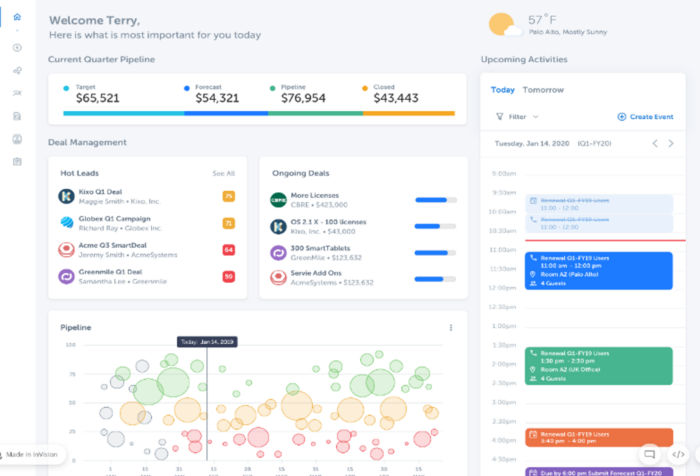The best reasons to migrate to SAP Sales Cloud

The SAP Customer Experience solutions, including SAP Sales Cloud, were introduced to revolutionize the CRM market. The suite enables companies to understand their customers even better and engage with them with hyper-personalized experiences.
We wonder why many SAP customers have not made the switch yet and are still using the system in the “old-fashioned” way.
Here at Amista, we have a strong focus on Sales Cloud. It is our duty to share with you why we love it so much!
As mentioned in the intro, SAP Sales Cloud is part of the Customer Experience (CX) Suite and is what SAP has to offer as their next-generation CRM solution. Sales Cloud is one of 5 modules in the Suite next to Service Cloud, Marketing Cloud, Customer Data Cloud and Commerce Cloud. It is a crucial tool for the Sales & Presales department and is built on the business process “Lead to Cash”, nurturing potential deals from start to finish.
- Connect with every customer and spend more time building relationships
- Streamline the selling process
- Increase win rates with intelligent recommendations and analytics
- Deliver the best possible sales experience

What makes Sales Cloud different than other CRM solutions?
Sales Cloud is different due to its interconnections. It is not trying to replace SAP CRM but simply helping it be more intelligent and intuitive. It is acting as a gateway, improving your experience and helping you to focus. Through the five modules that the Customer Experience suite has to offer, it targets each department that has an interaction with a customer. With its out of the box integration with SAP ERP, your front- and back-end are aligned at all times.
Sales Cloud offers many smart functionalities to help you be more productive.
We listed a few examples:
Adaptive UI & offline mode
CRMs are often used by salespeople who are in the field, meaning they are generally always on the go, so only using the platform on a laptop is not ideal. The user interface is scaled to be used on a mobile phone, tablet & laptop. It also supports an online & offline mode. In the offline mode, all your data is available, you can do everything that you would be able to in the online mode and once you have an Internet connection all your changes are synced.
Machine Learning
Deal intelligence is used to predict whether your future deals are going to be successful or not. It adds a score based on the chances of success. The score is created based on all the previous deals that are saved in the system, whether they were won or lost, the margin made on the deals and the amount of time it took. A filter can also be used to only see the deals that have a high score, meaning a high probability of success.
3rd Party Integrations
The LinkedIn sales navigator module provides an integration with Sales Cloud & LinkedIn. It allows you to find potential new customers, by looking at their job titles, professional experiences, common contacts and interests. The tool also notifies you when your customer shares new activities so you can quickly respond to their needs therefore further strengthening your relationship.
Sales Cloud has a built-in calendar but all our appointments are usually in our mailboxes. Sales Cloud also has an integration with Microsoft Outlook, using the groupware integration. Appointments, but also contacts, tasks and others are synchronized. Lead and opportunity information related to your contacts is also made available in Outlook itself, helping you to follow-up the activities with your customers.
Flexible and customizable
The platform is powered by SAP HANA, meaning it performs tasks at high speed. The user interface is customizable for the different profiles logging in. Sales managers can see on their main dashboard different charts and figures being able to rapidly check how the numbers are doing.
Move to SAP Sales Cloud
When moving to Sales Cloud from your current system, you will need to transfer your data from one system to another. This is the most important step and often the one that is underestimated in its complexity.
Luckily, Sales Cloud has a handy feature that makes your life a little easier. This tool is called the data workbench, it handles all the data uploads of all the different files that you want to import into your system. The data workbench can import, update and delete, it does all this via an Excel template that you can download from inside the tool. At Amista, we performed some migrations already and we can say with confidence that the tool is very intuitive and useful.
Knowing all this…
Here is a summary of 10 reasons why you should consider moving to SAP Sales Cloud!
If you’re not convinced already by now…
- Full transparency – connection to your ERP like SAP S/4HANA
- Intuitive tools to better understand the relationship with your prospect
- Intelligent AI and Machine Learning functionalities
- Clean, adaptable and easy user interface
- Data available at your fingertips on the go (online/offline)
- Clear analysis
- Integration with third-party applications
- Automated upsell/cross-sell recommendations
- Enhanced customer journey
- Great collaboration possibilities for Sales & Marketing teams
At Amista, we have gained valuable experience throughout the years at making the move to SAP Sales Cloud as seamless and smooth as possible! We always listen to our customers to really understand their needs before and after go-live by supporting them in continuing to improve their system.
Interested in a live demo?


